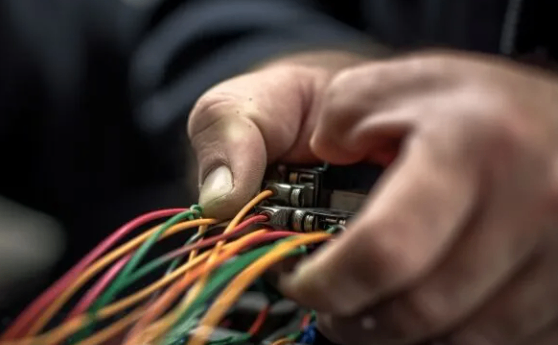 www.adsscable.cn
www.adsscable.cn
How to Detect, Prevent, and Repair Fiber Optic Cable Damage
www.adsscable.cn
Fiber optic cable damage can disrupt critical communication networks, slow down data transfer, and lead to costly downtime. Whether you’re managing a telecom infrastructure, a data center, or a home network, understanding the causes, signs, and solutions for fiber optic cable damage is essential. This guide provides actionable steps to safeguard your cables and maintain peak performance.
Common Causes of Fiber Optic Cable Damage
Physical Stress:
Excessive bending (violating the bend radius), crushing, or kinking during installation.
Rodent bites or accidental cuts during construction.
Environmental Factors:
Moisture ingress due to damaged outer jackets.
Temperature extremes causing expansion/contraction.
Human Error:
Improper handling, such as pulling cables too tightly.
Poor splicing or connector installation.
Signs of Fiber Optic Cable Damage
Intermittent or Complete Signal Loss: Sudden drops in network performance.
High Attenuation: Weak signal strength measured by an OTDR (Optical Time-Domain Reflectometer).
Visible Defects: Frayed jackets, cracked connectors, or exposed fibers.
How to Diagnose Fiber Optic Cable Damage
Visual Inspection:
Use a fiber microscope to check connectors for dirt, scratches, or misalignment.
OTDR Testing:
Deploy an OTDR to pinpoint the exact location of breaks or bends.
Power Meter Testing:
Measure light loss between the transmitter and receiver.
5 Ways to Prevent Fiber Optic Cable Damage
Respect the Bend Radius:
Never bend cables tighter than 10–20x their diameter (e.g., 30mm bend radius for a 3mm cable).
Use Protective Conduits:
Shield outdoor cables with armored tubing to resist environmental hazards.
Avoid Tension:
Install cables with slack loops to prevent stretching.
Regular Maintenance:
Clean connectors with lint-free wipes and isopropyl alcohol to prevent debris buildup.
Label and Document:
Mark cable routes to avoid accidental cuts during renovations.
Repairing Fiber Optic Cable Damage: Step-by-Step
Locate the Damage:
Use an OTDR or visual fault locator (VFL) to identify the issue.
Prepare the Cable:
Strip the damaged section and cleave the fiber ends.
Splice or Replace:
For minor breaks: Perform fusion splicing to reconnect fibers.
For severe damage: Replace the entire cable segment.
Test and Secure:
Validate repairs with a power meter and seal splices in protective sleeves.
When to Replace vs. Repair Fiber Optic Cable Damage
Repair: Small bends, minor jacket tears, or dirty connectors.
Replace: Extensive physical breaks, waterlogged cables, or repeated signal failures.
Industries Most Affected by Fiber Optic Cable Damage
Telecommunications: Network outages impact customer connectivity.
Healthcare: Interrupted data transmission delays critical patient diagnostics.
Smart Manufacturing: Broken cables halt automated production lines.
Conclusion
Proactively addressing fiber optic cable damage minimizes downtime and extends network lifespan. By combining preventive measures with swift repairs, businesses can ensure uninterrupted high-speed data flow. For complex installations, always consult certified technicians to adhere to industry standards like ANSI/TIA-568.
FAQ
Q: Can fiber optic cable damage cause a fire hazard?
A: No—fiber optics transmit light, not electricity, so they pose no fire risk.
Q: How long do fiber optic cables last before damage occurs?
A: With proper care, they can last 20–30 years, but environmental factors may shorten this.
Q: Is it safe to repair fiber optic cable damage myself?
A: Basic cleaning or connector replacement is DIY-friendly, but splicing requires specialized tools and training.
 www.adsscable.cn
www.adsscable.cn